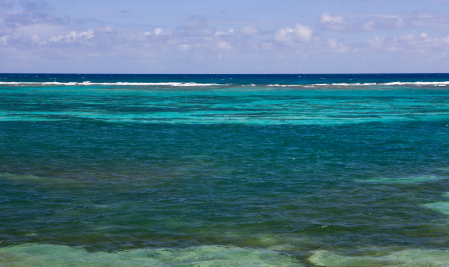Travel in St. Eustace – Hotels, St. Eustace Vacations, Lodging, Trips, Attractions and Travel Guide
St. Eustace: A Tourists Delight

The island of Saint Eustace is more commonly known as Statia and is located in the Leeward Islands, to the southeast of the Virgin Islands. The island is named after the Catholic Saint Eustace and the capital is Oranjestad. The island is a saddle shape and the highest point is Mount Mazinga, dormant volcano and also called Quill.
Quill Crater is a major tourist attraction and is a stratovolcano (a tall conical shaped volcano and composed of several layers of volcanic ash, lave and tephra). Volcanic eruptions from the volcano have indicated that the last eruption occurred between 1755 and 1635.
St. Eustace may be a small island but it was of great importance to colonial empires. Due to its position in the Caribbean, it was a prime location for trade routes. There were several fortifications built on the island over the years and was an important location during the years of the American Revolution.
Fort de Windt is located in Back-Off Bay in St. Eustace. The entrenchments began as early as 1748 and were transformed by Jan de Windt into the fortification it is now. The stone wall battery of the fort was erected in 1756 and the structure was built following the terrain on which is constructed. The fort is located on the hills high up on the cliffs and from this position the troops could defend against passing ships from the direction of St. Kitts, as well as any troops attempting to land on the bay below. The fort also served as an observation point for ships coming in from Europe who had to pass the fort on the way to the British island of St. Kitts. The fort consists of two large V-shaped parapets and low lying cobbled wall. One parapet faces Brimstone Hill, which is located on the island of St. Kitts to the west; the other parapet functioned as a retaining wall for the earth behind the wall and a gun platform. The fort continued to be used during the century and later when the British forces arrived, the fort was renamed “Lisburns Battery”, which served both the French and English. The battery was abandoned during 1815, during the Napoleonic Wars. The site still has four cannons, two of which have been remounted onto reproduction carriages.
On the Atlantic side of St. Eustace, Fort Amsterdam, Battery Concordia lies directly above Concordia Bay. The bay was built during the 1700's, however it was not a very good location. Because of tradewinds from the north and south, ships could basically pass by this point virtually unnoticed. During archeological excavations in the 1990's, numerous garrison related artifacts were uncovered.
Fort Oranje, is one of the most significant fortifications still left standing in its original form. The structure was the main area for defense on the island from the time it was built in the 17th century and today is used by the islands government. The fort is located high on top of a hill overlooking Oranje Bay, which is the center and heart of activity on the island. Today the fort is open for tours to the general public and is the best maintained of the various forts on the island.
There are many lovely hotels on the island including the Victoires Opera Hotel Guests here are treated to a hotel that has recently undergone extensive renovations and updates. The hotel is enchanting and is close to all the major attractions on the island of St. Eustace. Other lodgings include the Hotel Cyrano, which is a smaller family owned establishment. The hotel has 23 rooms and each are equipped with deluxe fixtures that promote comfort and elegance. The island of St. Eustace holds a wealth of bastions and history that is just waiting to be explored; it is the perfect vacation for history lovers everywhere.
Comment about this article, ask questions, or add new information about this topic: